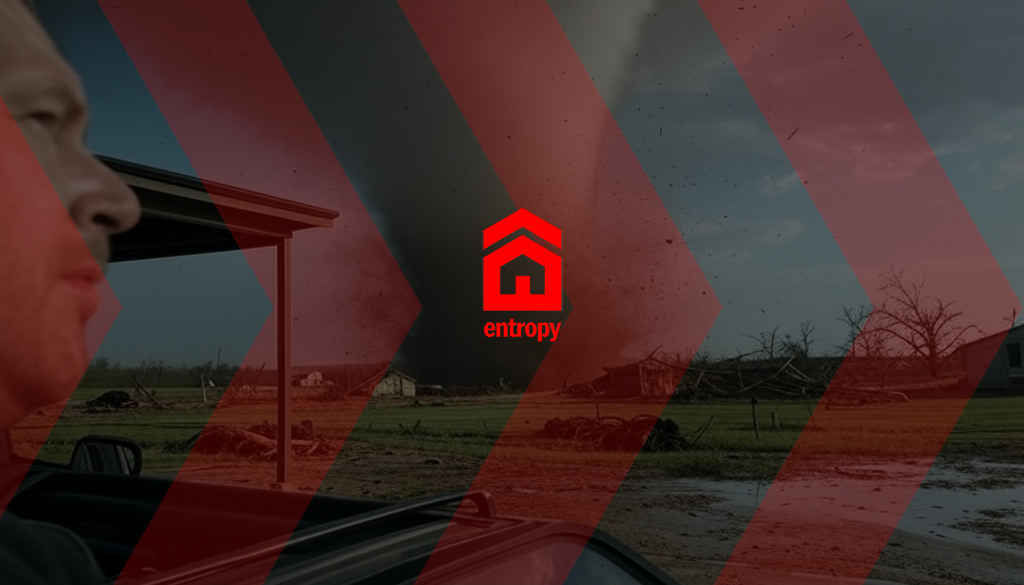Being stranded in a vehicle during a tornado is a frightening and potentially dangerous scenario. However, with the right knowledge and preparation, you can increase your chances of staying safe. This guide will walk you through what you need to know and do if you find yourself caught in a tornado while in your car.

Understanding Tornadoes
Tornadoes are powerful storms characterized by rotating, funnel-shaped clouds that extend from a thunderstorm to the ground. They can cause severe damage, lifting cars, destroying buildings, and uprooting trees. Tornadoes can travel at speeds of up to 70 miles per hour and have wind speeds exceeding 200 miles per hour.
Immediate Steps to Take
If you find yourself in your vehicle during a tornado, follow these steps to enhance your safety:
1. Stay Calm and Assess the Situation
- Stay calm: Panic can cloud your judgment and slow your reaction time. Take deep breaths and focus on the steps you need to take.
- Assess the situation: Look around for the tornado and determine how close it is. Knowing the tornado’s proximity will influence your next actions.
2. Avoid Driving Towards the Tornado
- Don’t try to outrun it: Tornadoes can change direction quickly and unpredictably. It’s dangerous to attempt to outrun a tornado with a vehicle.
- Drive at a right angle: If the tornado is far away and you have time, try driving at a right angle to the tornado’s path (to the left or right, not towards or away from it) to get out of its way.
3. Find a Safe Location
- Look for sturdy shelter: The safest option is to find a nearby sturdy building, like a well-constructed house, school, or community center. Seek shelter inside and go to the lowest floor, away from windows. Ideally, head to a basement or an interior room.
- Avoid bridges and overpasses: These structures can actually increase wind speeds and create debris hazards.
4. If No Building is Available, Stay in the Car
- Lower yourself in the vehicle: Keep your seatbelt fastened. Lower yourself below the windows, covering your head with your arms and a blanket or coat if available.
- Avoid large vehicles: Vehicles like trucks and SUVs are more susceptible to being flipped over by strong winds.
5. If Outside the Car, Find the Lowest Ground
- Find a ditch or low-lying area: Lie flat, face down, and cover your head with your hands. Avoid areas with water due to the risk of flooding.
- Use your surroundings: If there are culverts or low areas that provide cover, use them to shield yourself from debris.
6. Stay Informed
- Listen for updates: Keep a battery-powered weather radio or a smartphone with emergency alerts to stay updated on the tornado’s path and additional safety instructions.
Preparing Ahead of Time
Preparation is key to handling emergencies effectively. Here are steps you can take before a tornado strikes to ensure you’re as ready as possible:
1. Build an Emergency Kit for Your Car
Include essential items in your car emergency kit:
- First aid kit
- Blankets or sleeping bags
- Non-perishable food and bottled water
- Flashlights with extra batteries
- Portable phone charger
- Battery-powered weather radio
- Basic tool kit
- Rain gear and sturdy shoes
- Whistle to signal for help
2. Know the Signs of a Tornado
Familiarize yourself with the signs of an approaching tornado:
- Dark, greenish sky
- Large, low-lying clouds (wall clouds)
- Loud roar, similar to a freight train
- Debris cloud even if the funnel is not visible
3. Plan Your Routes and Shelters
Plan your routes and identify potential shelters ahead of time:
- Know the local area: Familiarize yourself with buildings that could serve as shelters.
- Share your plan: Let family or friends know your tornado plan and routes.
4. Practice Tornado Drills
- Conduct regular drills: Practice what you would do in the event of a tornado, both at home and in your car. This will help you stay calm and act quickly during an actual event.
Emphasize Communication
Effective communication can save lives during emergencies:
1. Inform Others of Your Whereabouts
- Use GPS tracking: Share your location with family and friends through a GPS app on your smartphone.
- Keep phones charged: Ensure your phone is fully charged and carry a portable charger.
2. Stay Tuned to Weather Alerts
- Install weather apps: Use trusted weather applications that provide real-time alerts and updates, such as the National Weather Service (NWS) or local news stations.
What Not to Do
Avoid these common mistakes that people often make during tornado emergencies:
1. Do Not Stay in a Car During a High-Risk Tornado
Cars can be lifted and thrown by tornadoes, posing serious danger. Only stay in your car if you have no safer options available.
2. Do Not Shelter Under Overpasses or Bridges
This is a common myth. Overpasses and bridges can act like wind tunnels, increasing the wind speed and danger from debris.
3. Do Not Assume You Can Outrun the Tornado
Tornadoes move unpredictably and can change direction without warning. Trying to outrun a tornado in your vehicle is extremely risky and not advisable.
Life-Saving Tips
Here are additional tips that could make a crucial difference:
1. Wear Your Seatbelt
Always keep your seatbelt on if you remain in your car. It will help protect you during sudden impacts.
2. Use Available Items for Protection
Use anything in your car to protect your head from potential debris, such as blankets, coats, or even pillows.
3. Be Aware of Issues After the Tornado Passes
After the tornado has moved on, be cautious:
- Watch for debris: Be mindful of sharp objects and fallen power lines.
- Communicate your status: Let emergency services or family know you are safe or need assistance.
Final Thoughts
Being stranded in your vehicle during a tornado is undoubtedly scary, but following these guidelines can significantly enhance your safety. Remember to stay calm, find the best available shelter, and prioritize protecting yourself from debris and wind. By preparing ahead of time and knowing the right actions to take, you can increase your chances of surviving a tornado.
For more detailed and region-specific instructions, refer to the National Weather Service and the Federal Emergency Management Agency (FEMA). Stay informed, stay prepared, and stay safe.
Disclaimer: This advice is general in nature and may not address every specific situation you encounter. Always refer to local authorities and weather services for the most accurate and relevant guidance during an emergency.
Make sure to check out more articles in our News & Views section. Feel free to reach out any time to see how Entropy Survival can help you prepare you and your family for any disaster or survival scenario.
